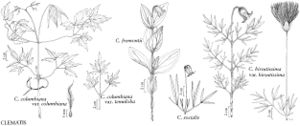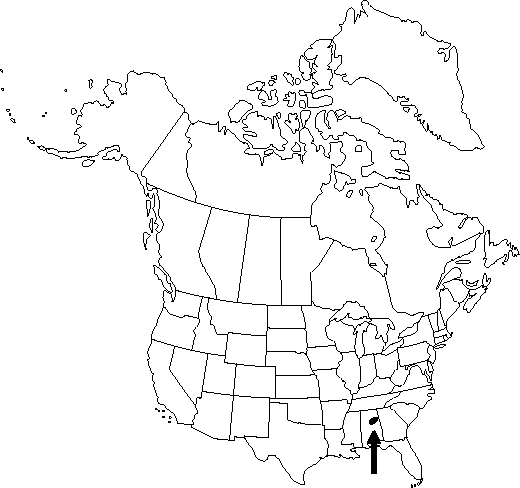Difference between revisions of "Clematis socialis"
Rhodora 84: 287. 1982.
FNA>Volume Importer |
FNA>Volume Importer |
(No difference)
| |
Revision as of 22:11, 16 December 2019
Stems erect, not viny, 0.2-0.3(-0.5) m, glabrous or slightly pubescent, arising from horizontal, branching rhizomes and forming patches. Leaves: proximal simple, blades unlobed or 2-3-lobed, distal blades 1-pinnate; leaflets and unlobed blades linear-elliptic to narrowly lanceolate or oblanceolate, (3-)4-12(-15) × (0.3-)0.5-1(-1.5) cm, thin, not prominently reticulate; surfaces abaxially nearly glabrous to sparsely villous on veins, not glaucous. Inflorescences terminal, flowers solitary; bracts absent. Flowers narrowly urn-shaped; sepals uniformly violet-blue, oblong-lanceolate, 2-2.5(-3) cm, margins narrowly expanded distally to about 1 mm wide, thin, crispate, proximally tomentose, tips spreading to recurved, acute to acuminate, abaxially sparsely puberulent. Achenes: bodies appressed-puberulent; beak 1.5-2.5 cm, appressed-puberulent.
Phenology: Flowering spring–fall.
Habitat: Openings in wet bottomland woods
Elevation: 200 m
Discussion
Of conservation concern.
Clematis socialis, the only species of Clematis subg. Viorna in the flora with horizontal, patch-forming rhizomes, is known only from three small populations in St. Clair and Cherokee counties south of Ashville, in northeastern Alabama.
Selected References
None.

